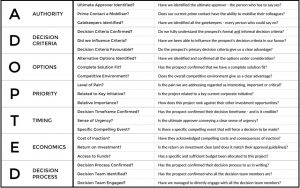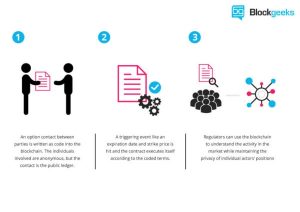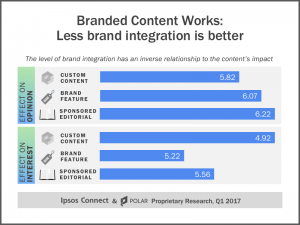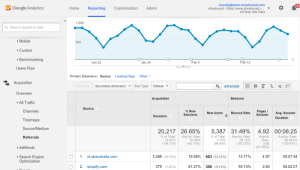The holiday shopping season is already underway, but luckily for marketers, Stefan Benndorf offers some do’s and don’ts to help drive mobile consumers down the purchasing funnel quickly.
 Q4 is the busiest shopping season of the year, both online and off. Mobile commerce is on the rise, but there is still a gap between how much time people spend shopping on their devices and how much and how often they actually buy. Online sales account for less than 10 percent of the total global retail market. But trends may be shifting, and that spells opportunity for digital marketers.
Q4 is the busiest shopping season of the year, both online and off. Mobile commerce is on the rise, but there is still a gap between how much time people spend shopping on their devices and how much and how often they actually buy. Online sales account for less than 10 percent of the total global retail market. But trends may be shifting, and that spells opportunity for digital marketers.
An increasing number of consumers are making purchases online. Just look at Cyber Monday, which set a new online sales record in the US. Since people spend so much of their device-using time in apps (86 percent of it, to be exact), one of the best ways to drive purchases this season is by focusing on your mobile app strategy.
Here’s how to drive mobile purchases during the holidays, and all year long, as well as some common app marketing mistakes you should avoid.
1. Do use push notifications (but don’t abuse them)
Push notifications are a great tool for driving engagement and, ultimately, purchases, especially when you target consumers who use your app frequently. In fact, push notification opt-in rates have a direct correlation to marketing success. Opt-in rates vary by industry, with time-sensitive verticals like business, travel and games generating higher opt-in rates.
To make the most of push notifications, invite users to opt in immediately after they download your app. When doing so, be sure to convey what’s in it for them, and allow them to specify which types of notifications they want to receive.
People often sign up for push notifications because they want to learn about deals, and they are 42 percent more likely to make a purchase after receiving a push notification. Entice users with a customized, time-sensitive offer to drive conversions.
Additionally, send them updates on products they’ve shown an interest in. For example, perhaps they’d appreciate hearing when inventory level is low or their size is back in stock.
Time of day matters, too. Respect the intimate nature of the mobile device, and exercise common sense. Don’t send a push notification in the middle of the night. People will opt out if you reach out too frequently or share irrelevant content, so emphasize quality over quantity.
2. Do use email marketing (but don’t get “spammy”)
This tried-and-true marketing technique is as effective as ever, even for millennial audiences. In 2015, email marketing accounted for 20 percent of holiday sales, so it can be a great tactic for driving purchases. Just be sure you’ve adapted your techniques to reflect modern best practices.
The majority of emails are now opened on mobile devices, so optimize your emails for mobile. Customize your content per audience segments, monitor campaign KPIs, and refine as needed.
Don’t be afraid to have a little fun with seasonal content. Offer value beyond discounting, such as free shipping or free gift-wrapping. Make it easy to customize communication preferences and opt out of offers, and, again, adopt a quality over quantity approach.
3. Do use a retargeting strategy (but don’t forget to segment users)
Retargeting helps you connect with shoppers who have already shown an interest in your product or services. It’s cost-effective and has a proven ROI, in part because you’re focusing on people who have already begun their journey down the marketing funnel.
The key here is to serve the appropriate content and to stop serving the ads once they are no longer relevant. Once users have converted, you are wasting money by serving them the same ads, and worse, you are annoying them and potentially turning them off from your brand. Have a plan for automatically segmenting users and removing them from that segment once they complete the desired action.
With all of these tactics, avoid these common marketing mistakes:
• Not refreshing creative frequently enough
A large part of your strategy is to drive more action from your existing customers. This means they’ll be hearing from you often. Spare them creative fatigue by customizing your ads frequently, based on both the audience segment and the channel you are advertising on.
Create multiple ad versions at the onset of the campaign so you are not scrambling once things are underway.
• Failing to test, monitor and refine
Just because you’ve thought up a clever holiday message doesn’t mean it will prove effective. Have an SDK in place so you can monitor your results and refine as needed.
Different audience groups will respond better to different tactics and creative. There are a lot of moving parts, so organization and analysis are crucial. Don’t “set it and forget it.” Hands-on management will help you derive more from every dollar you spend.
• Deep linking
Deep linking takes users to a specific page, as opposed to a home page. For app marketers, deep linking significantly improves retention. It can also be used to siphon shoppers from the mobile web to the mobile app and to drive app installs. Deep linking tactics also make it easier to measure campaign results.
Marketers should heed this advice year-round to optimize mobile purchases, but it’s especially important to adopt best practices in Q4, when shoppers are spending more.
Mobile commerce is growing, but based on how much time people spend on their mobile devices, it could be growing even faster. Smart marketing will help retailers capitalize on the tremendous mobile commerce opportunity.
Some opinions expressed in this article may be those of a guest author and not necessarily Marketing Land. Staff authors are listed here.
Marketing Land – Internet Marketing News, Strategies & Tips
(29)







